Tulips are known and loved for their diverse color palette. Images of endless tulip fields in Holland adorn people’s walls, computer backgrounds, and even their dreams.
The seemingly endless rainbow of tulip varieties often leads to the question: how many tulip colors are there? The simple answer is that there’s an infinite blend, with true blacks and true blues being the only limitations.
Let’s dive into a complete list of tulip colors to learn their symbolism and popular species.
White Tulips
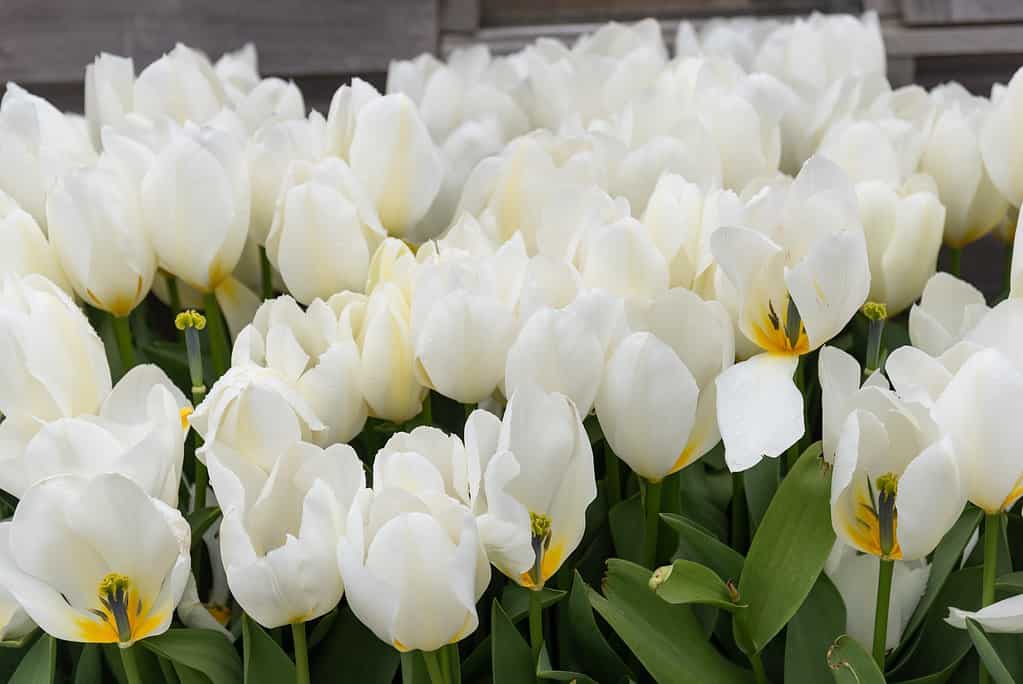
Close-up of flowering
Tulipa‘Purissima’ tulips.
©Andrew Fletcher/Shutterstock.com
While white tulips don’t have as many prominent myths or legends associated with them compared to some other flowers, they do hold symbolic significance in various cultures.
Like many white flowers, white tulips are associated with purity, innocence, and birth. These associations make them an ideal gift for religious ceremonies. For example, baptisms or weddings. Additionally, they make an elegant depiction of the coming spring if you prefer a clean aesthetic to the traditional pastels and vibrant tulip shades.
There are several pure white tulip types. For example, Tulipa ‘Pim Fortuyn’ and Tulipa ‘Snow Crystal.’ White tulips also come in shades of ivory or cream— Tulipa ‘Verona’ and Tulipa ‘Maureen’ are perfect examples of this muted tone.
Pink Tulips
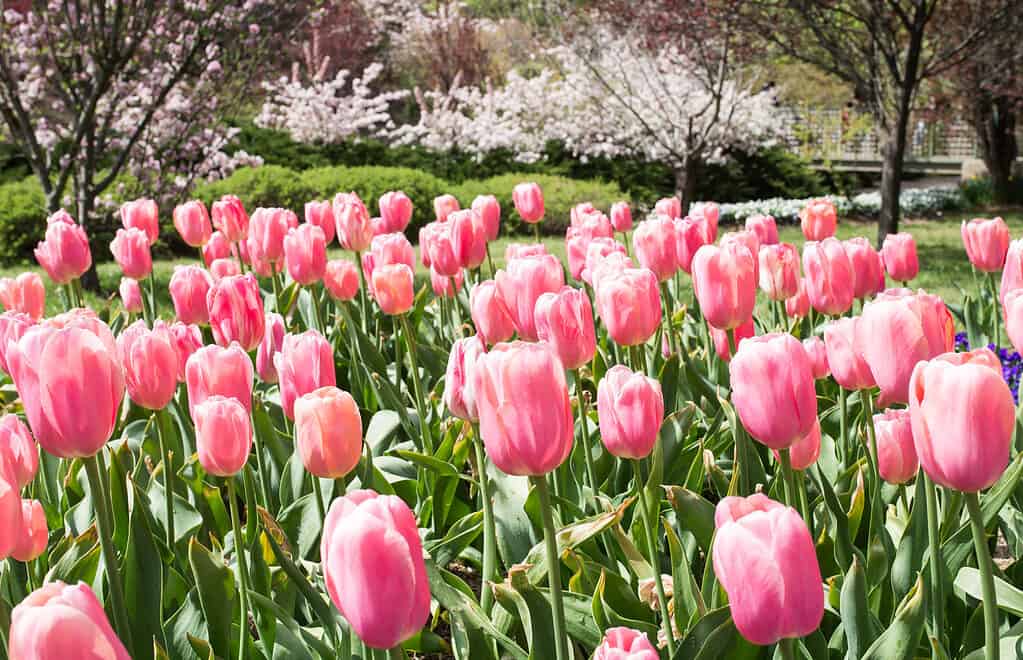
Pink Menton tulips blooming in a garden
©Nanzyprom/Shutterstock.com
A symbol of spring, pink tulips symbolize love and caring. They’re typically associated with the love between friends and family members rather than romantic love. You can send these pretty petals to a friend to wish them well on a new journey in life. For example, a new job, a pick-me-up after a breakup, or welcoming a new baby.
From soft pastel pinks to vibrant shades, pink tulips offer a range of captivating options. Cultivars like Tulipa ‘Pink Diamond’ and Tulipa ‘Angelique’ have beautiful blush tones bordering on white. Other cultivars like Tulipa ‘Pink Impression’ present bolder and more saturated pink.
Red Tulips
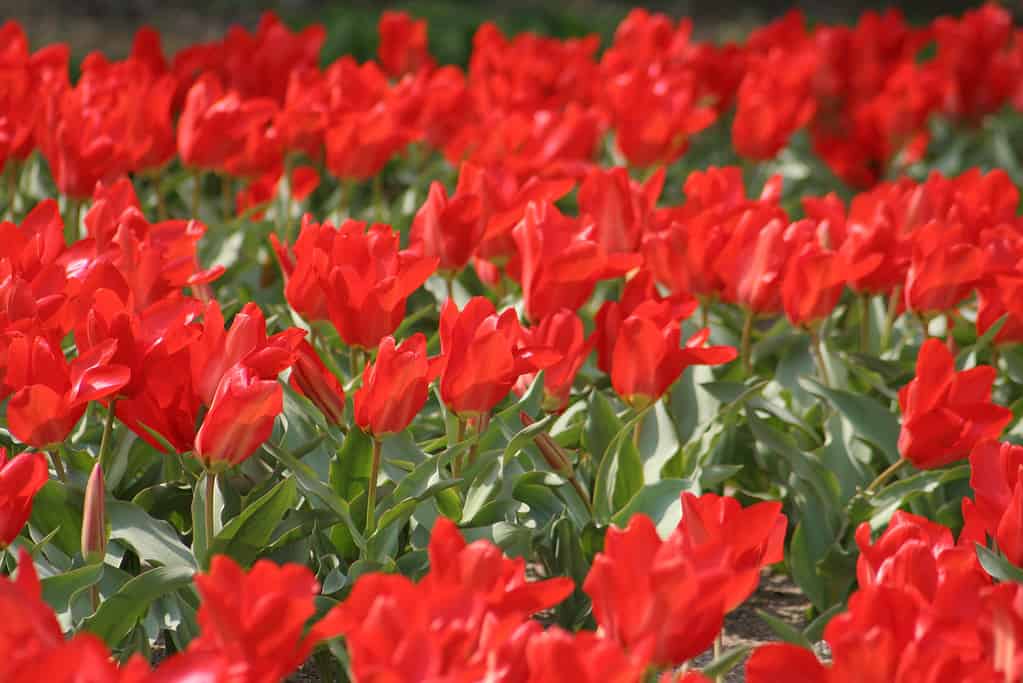
‘Red Emperor’ tulips blowing in the wind.
©iStock.com/HosiZin
Red tulips are a focal point in Central Asian lore. Native to this region, their association with love and devotion can be traced back to the Persian tale of Farhad and Shirin, a tragic love story reminiscent of Romeo and Juliet.
In this poignant tale, Shirin, a princess of noble lineage, found her heart captivated by Farhad, a man considered beneath her station. Despite their undeniable love, societal barriers prevented their union. Faced with immense despair and longing, the star-crossed lovers chose a tragic fate, ending their lives. Legend has it that as their blood spilled upon the ground, it gave rise to exquisite red tulips, forever immortalizing their passionate love.
Today, this tale resonates with many gardeners and tulip enthusiasts, who view the arrival of red tulips as a herald of spring and a symbol of enduring love. They’re the perfect gift for Valentine’s Day or as a reminder of your lasting devotion.
There are many types of red tulips, ranging from orange tones to pure, rich reds. Tulipa ‘Red Emperor’ is one of the most popular varieties, while cultivars like Tulipa ‘Rococo Parrot’ and Tulipa ‘Valery Gergiev’ are unique and exotic.
Purple Tulips
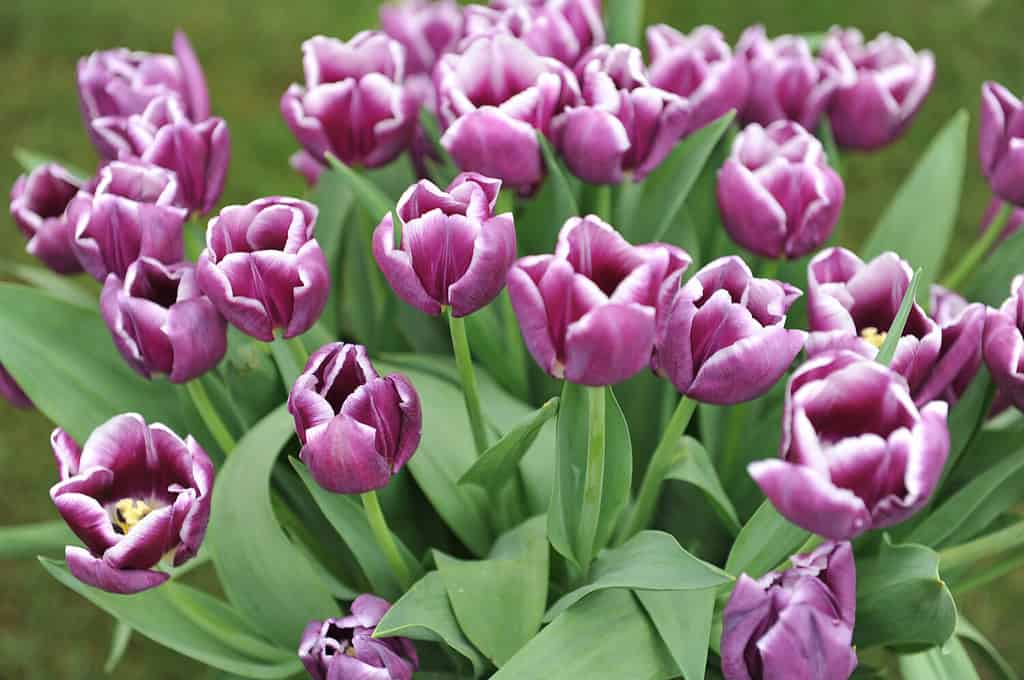
Purple tulips come in a wide variety of shades.
©Sergey V Kalyakin/Shutterstock.com
Although tulips display a wide array of colors, the existence of true purple tulips in nature is a rarity. Their captivating shades are the result of meticulous breeding and hybridization by skilled horticulturists over the years. Many purple tulips are classified as blue or black tulips. However, their purple notes become apparent in the sunlight.
Purple tulips are often associated with royalty, opulence, and influence. Their regal hue evokes a sense of grandeur and power. They make a great gift for someone celebrating a new beginning, such as a new job, a new house, or a significant life event.
Purple tulips range from vibrant pinky tones like Tulipa ‘Ballade’ to rich fushia tones like Tulipa ‘Negrita and Tulipa ‘Purple Dream.’
Orange Tulips
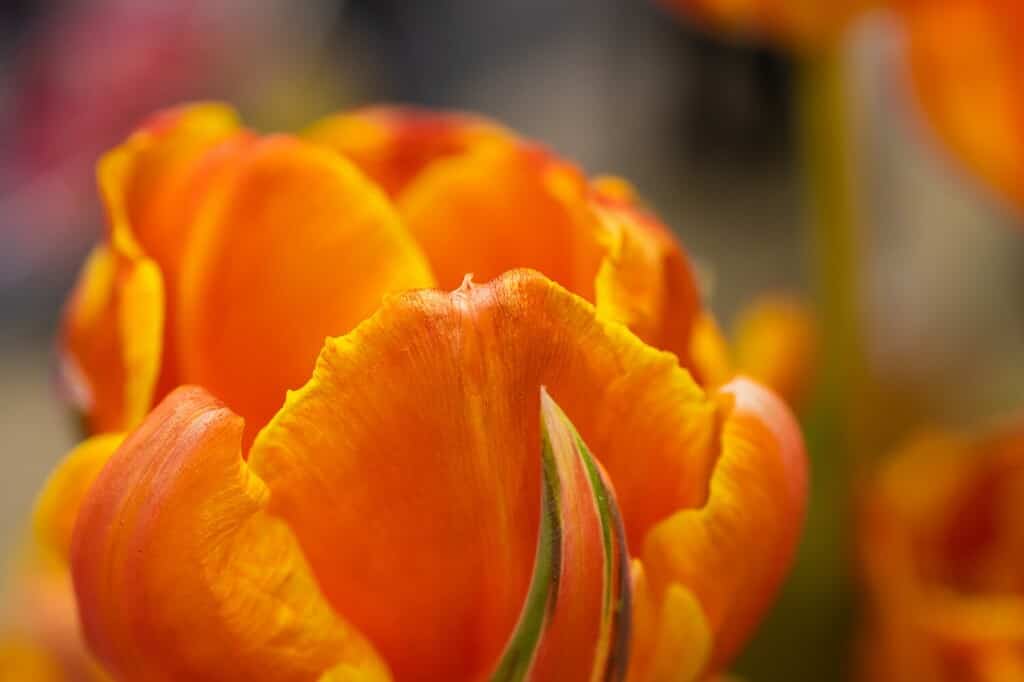
Orange tulips have a rich history in Canada.
©Blomsterflickan/Shutterstock.com
Vibrant and cheerful, orange tulips hold a rich history, with themes of understanding and appreciation.
In a remarkable gesture, following the end of World War II in 1945, the Dutch Royal family showed their gratitude for Canada’s pivotal role in liberating Holland by sending hundreds of thousands of orange tulip bulbs. This lovely exchange symbolized the enduring bond between the nations.
In 2020, Canada commemorated Liberation75, marking the 75th anniversary of the liberation. As part of this significant event, Canadians were encouraged to acquire orange tulip bulbs, with proceeds benefiting the Royal Canadian Legion. A remarkable 1.1 million bulbs were purchased and planted, including 100,000 bulbs gifted by the Dutch Royal Family in a touching tribute to their original offering.
These bright orange tulip blooms painted the nation and its capital in vibrant hues, symbolizing remembrance and appreciation.
Furthermore, orange tulips hold special significance in Canadian remembrance gardens, serving as a tribute to honor the memories of departed loved ones. These blooms stand as a symbol of remembrance, gratitude, and the ties between nations.
Orange tulips range from soft coral and apricot shades, as seen in Tulipa ‘Apricot Impression’ and Tulipa ‘Ballerina’ to vibrant true orange in the popular Tulipa ‘Orange Emperor’ and Tulipa ‘Orange Princess.’
Yellow Tulips
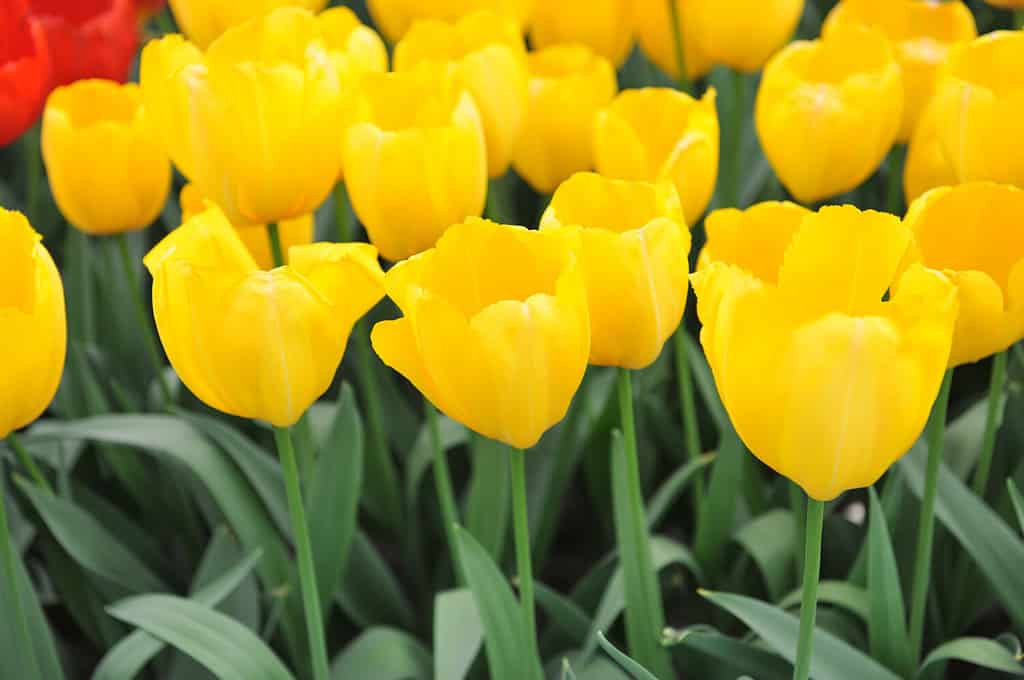
Yellow tulips represent friendship.
©Sergey V Kalyakin/Shutterstock.com
Bright and cheerful yellow tulips carry symbolic meanings of friendship, happiness, and new beginnings. They are a perfect choice to celebrate milestones, express gratitude, or simply uplift someone’s spirits.
Like many yellow flowers, yellow tulips also represent gratitude and appreciation. A bouquet of bright yellow tulips is a great way to say thank you to someone for their help and support.
Yellow tulips come in soft shades like Tulipa ‘Secret Perfume’ and bold sunshiny hues like Tulipa ‘Sun Gold.’ Some yellow tulips border on orange or gold, like Tulipa ‘Gold Fever’.
Black Tulips

Queen of Night is considered one of the most popular black tulips, even though it’s purple.
©rob3rt82/Shutterstock.com
Black tulips don’t occur naturally—most cultivars are deep shades of purple.
However, the allure of a black tulip captured the imagination of horticulturists inspired by Alexander Dumas’s renowned 1850 novel, The Black Tulip. Set in the Netherlands centuries ago, the novel revolves around the pursuit of a unique black tulip symbolizing immense wealth and fame.
Within the pages of this literary masterpiece, themes of love, loyalty, betrayal, and ambition intertwine, offering insights into the historical backdrop of Tulip Mania—a time when tulip bulbs were prized commodities.
The influence of Dumas’s work inspired horticulturists to try to create true black tulips.
In 1986, horticulturist Geert Hageman achieved a significant milestone by developing the ‘Paul Scherer,’ considered the world’s darkest tulip. Yet, even this variety exhibits purple undertones. The quest for a truly black tulip remains ongoing.
Today, this enigmatic flower continues to symbolize notions of wealth, power, and strength, maintaining its allure and mystique across generations.
Some favored black tulips include Tulipa ‘Queen of Night’ and Tulipa ‘Paul Scherer.’
Green Tulips
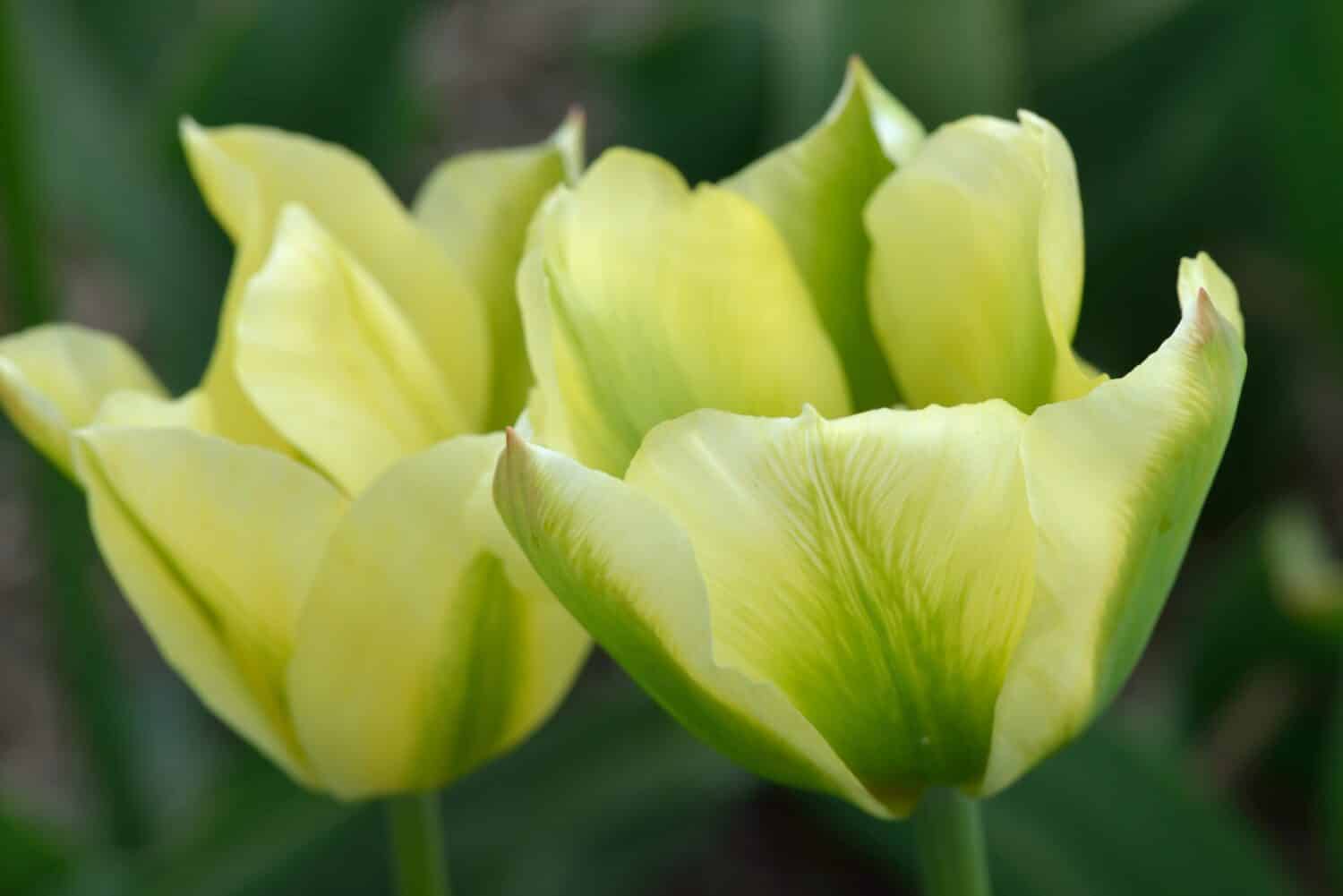
Viridiflora Tulips have distinct green markings.
©Walter Erhardt/Shutterstock.com
There are no true green tulips. However, Viridiflora Tulips are a group of tulips associated with green markings. These typically streak upward from the foliage and mark the outside of the tulips’ petals.
One of the most popular “green” cultivars is Tulipa ‘Spring Green’. This white tulip is a stunning contrast to the green exterior streaks that give the petals a mint-like tint in certain lighting.
While there are no symbolic associations with green tulips, green flowers typically represent health, youth, and good fortune.
Blue Tulips
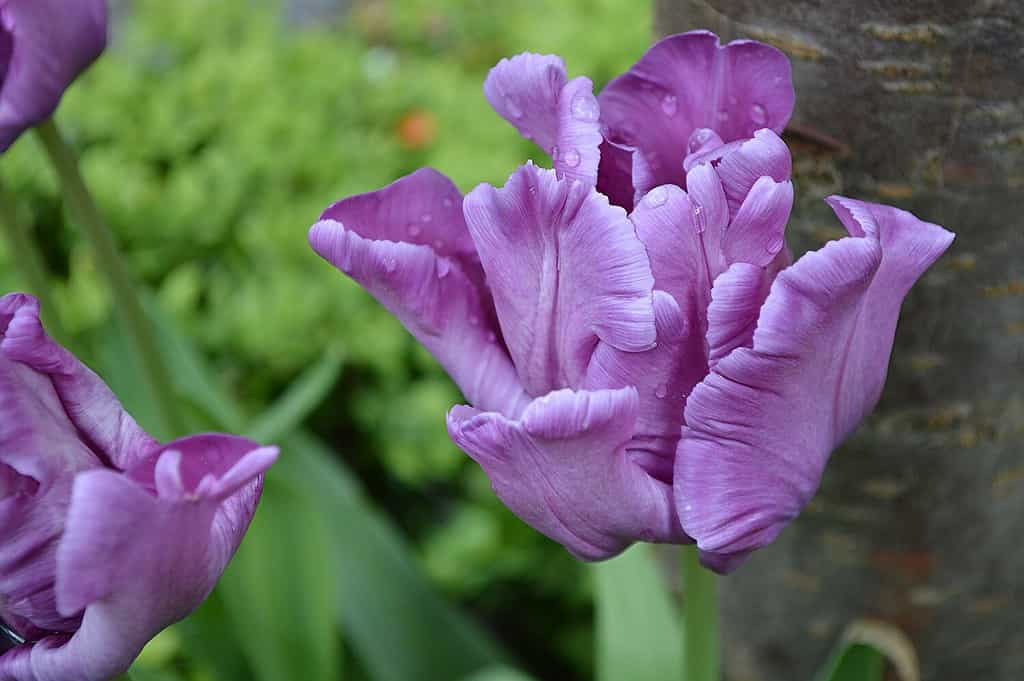
True blue tulips do not exist in nature.
©Joe Kuis/Shutterstock.com
Blue tulips are another enigma of the gardening world.
Despite the dedicated efforts of plant breeders to produce blue tulips through hybridization and genetic modification, their endeavors have yet to yield success. The 2017 Philadelphia Flower Show showcased mesmerizing blue tulips that captivated spectators. However, it was later revealed that these blooms had been dyed to attain their striking hue.
As blue tulips do not occur naturally, they lack specific symbolic meanings. Blue flowers tend to represent peace and remembrance.
Some purple tulips have blue undertones that earn them a “blue tulip” classification. Some examples include Tulipa ‘Blue Parrot’ and Tulipa ‘Victoria’s Secret.’
Bi-Color Tulips
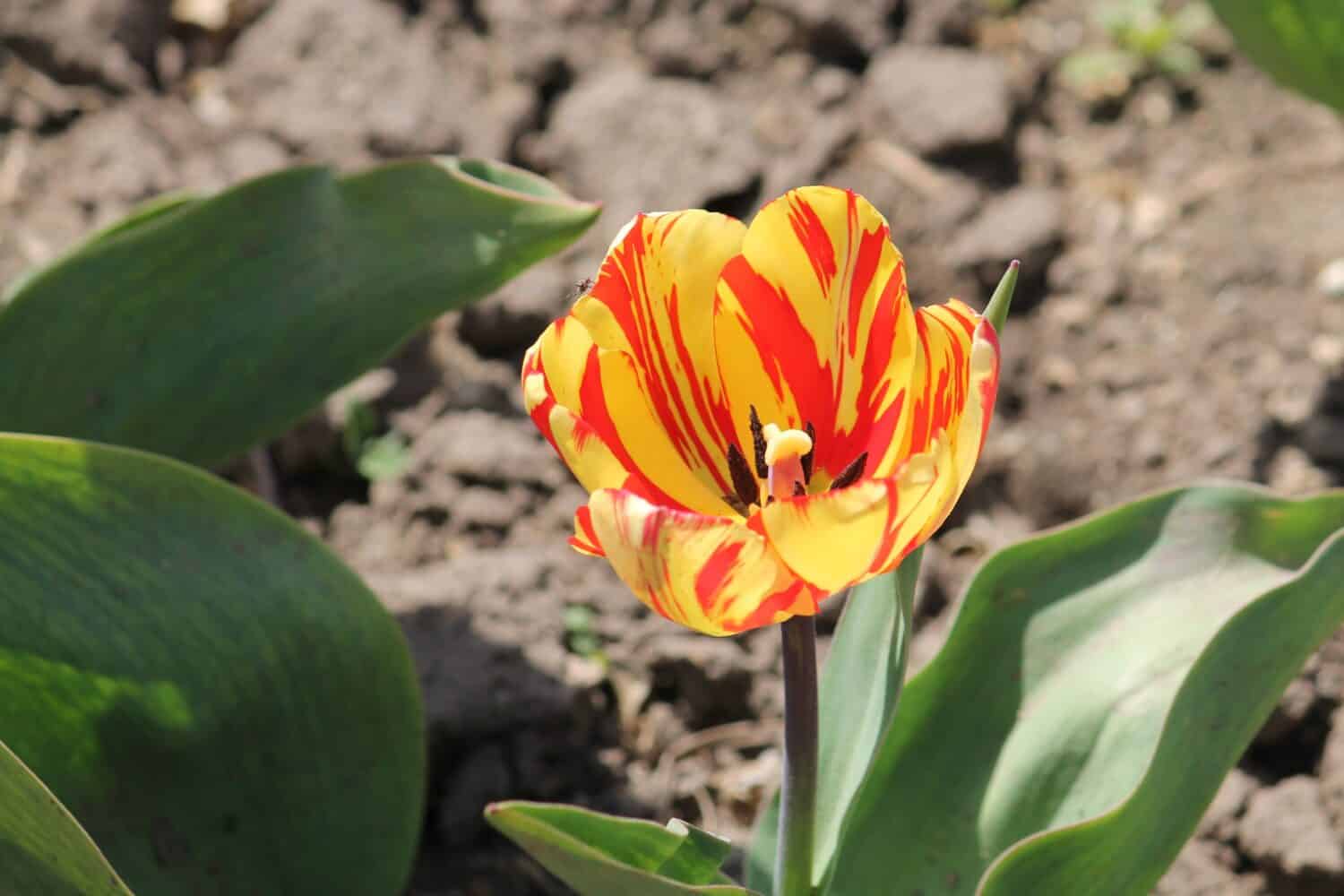
Broken tulips are caused by the Tulip Breaking Virus (TBV).
©Kazakov Maksim/Shutterstock.com
Multicolored tulips—known as bi-color tulips—are quite common. You can often find pink and yellow tulips or white tulips with different colored markings.
It’s important to understand the difference between bi-color tulips. Bi-color tulips often have symmetrical, organized tones, and broken tulips with unique, feathered markings.
The culprit behind the distinct streaking and feathering of colors on these popular tulips is the tulip-breaking virus (TBV). While the broken tulips have mesmerizing bi-color patterns, the virus could also weaken the plants over time. Collectors keep their broken tulips separate from healthy tulip crops in the Netherlands, ensuring their preservation.
The most famous broken bi-color tulip is the Semper Augustus. With its pristine white petals adorned by velvety red flames, the Semper Augustus presented an awe-inspiring sight. At the height of the European tulip craze, this bulb fetched a modern equivalent of $178,200. The name “Semper Augustus” translates from Latin to “Always August,” a nod to its timeless allure.
The photo featured at the top of this post is © iStock.com/ShriramPatki
Thank you for reading! Have some feedback for us? Contact the AZ Animals editorial team.







